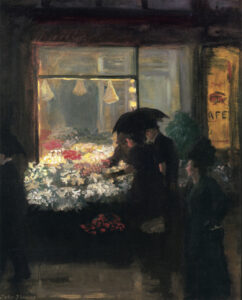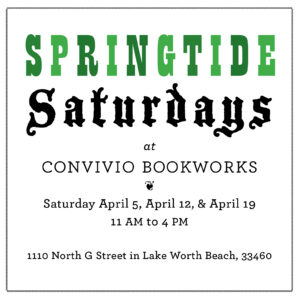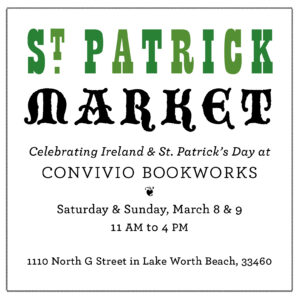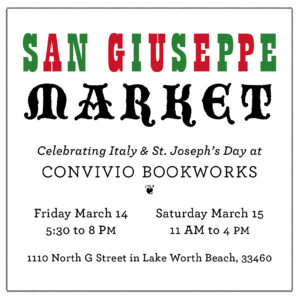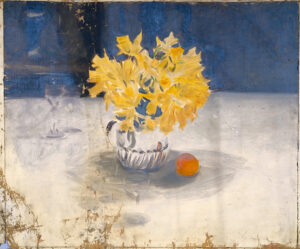April First now and here is your printable Convivio Book of Days calendar for the month. Cover star this time around: a rainy Easter Eve (in Paris, is my guess), painted in 1907 by John Sloan. We just reached Midlent this past Sunday, or Laetare Sunday, which means we are halfway through our Lenten journey, on the road to Easter, which this year comes on April 20. These are all movable days in the calendar, based on the timing of the full moon that follows the Vernal Equinox. I’ve never quite had the wherewithal to sit down and learn the calculations that determine the date each year of Easter. All I know is Lent began late this year and, following course, Easter comes late, too. I like when things are late, as I don’t feel so rushed.
Today, of course, is the First of April, which brings All Fools’ Day, and that is not a movable holiday. The origins of the day’s shenanigans are tough to pin down. Most signs point to the fact that March 25 was once New Year’s Day, making the First of April the Octave of New Year and the end of the new year revels, and it is thought that perhaps the foolishness of the date goes back to very old new year customs. The tricks and practical jokes traditionally end at noon, but not everyone understands this and so I think it’s a good day to remain generally wary and on guard.
April also brings Passover this year, and all the days of Holy Week that lead us to Easter, including one of my favorite nights of the year: Holy Thursday, or Maundy Thursday, when we visit three churches to sit in the close and holy darkness, together with other pilgrims doing the same. It is always such a lovely night: candle-lit, peaceful, a night when you can hear each old church’s creaks and groans. Our niece comes with us now on this pilgrimage, and I don’t even know if she realizes we do this each year because my grandma, Assunta, taught me to do it when I was a boy, the same age as my niece is now.
April also brings a springtime excuse to drink eggnog with San Jacinto’s Day on the 21st, and romantic divination a few nights later, on St. Mark’s Eve, and then comes Independent Bookstore Day on Saturday April 26. I’m generally not one for these newfangled holidays, but this one has new meaning for Convivio Bookworks now that we fancy ourselves a bit of an independent bookshop. We’ll be making a weekend-long celebration of it at the shop, where you may come print on our 1950s Nolan Tabletop Press and learn how to make your own book, too. Walpurgis Night wraps up the month, as the night of April 30 drifts into the morning of May the First, and May Day, an unoffocial first day of summer.
If you live in the South Florida area, please consider joining us at the shop for any of these upcoming events pictured below. The workshops require advance registration. Our Springtide Saturdays are perfect days to gather what you need for Easter. And Independent Bookstore Days are just going to be a whole lot of fun as we celebrate these things we love so much: books and reading. Click on any of the images to make them larger for easier reading, and find more details by visiting our Convivio Bookworks catalog pages. The shop is easy to find but off the beaten path at 1110 North G Street, Suite D, in Lake Worth Beach, Florida 33460.
Top image: “Easter Eve” by John Sloan. Oil on canvas, 1907 [Public domain, via Wikimedia Commons.]
